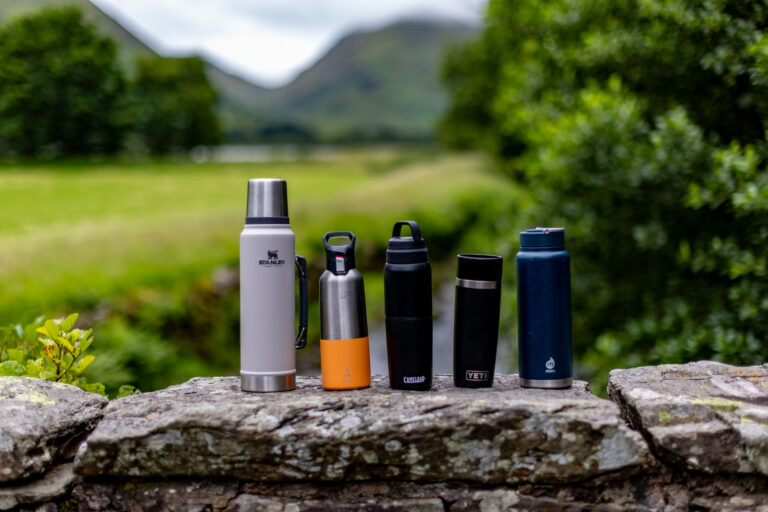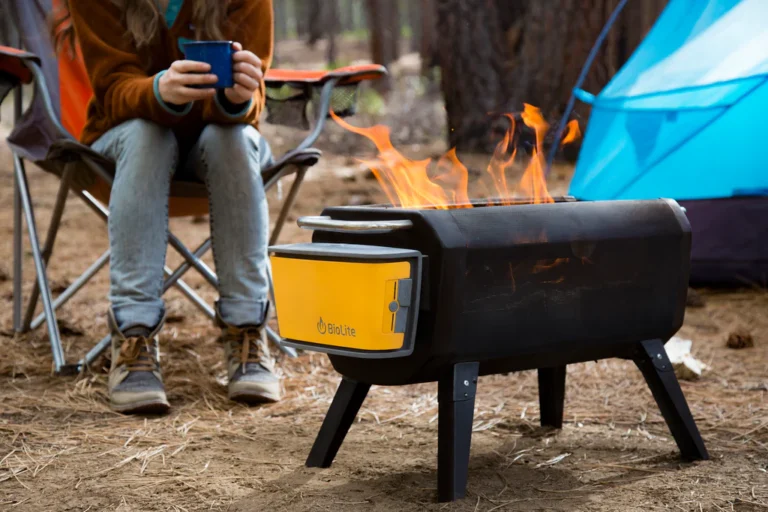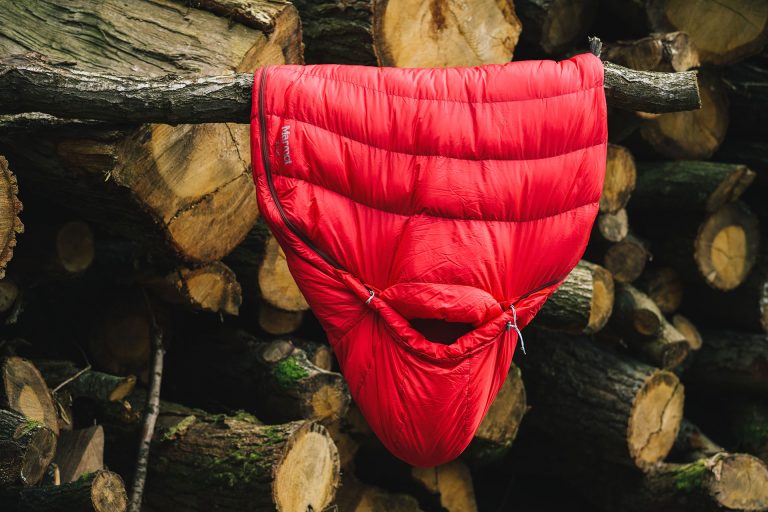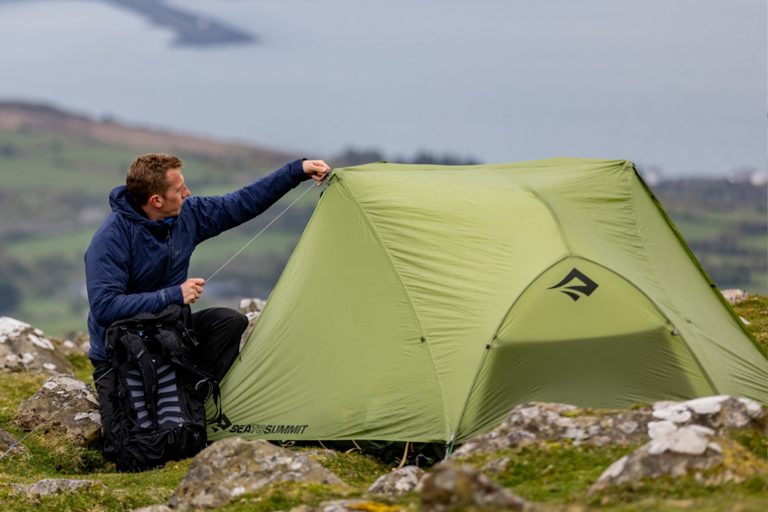Having a good family camping tent can make or break a holiday. Nobody wants to spend hours pitching their tent, trying to work out which poles fit through which sleeves. Nor do you want to feel cramped when you’re inside, jostling with other family members for elbow room.
Fortunately, most modern family tents are designed to be the perfect home from home. The best family tents now come with modern fabrics and improved ventilation systems that ensure they feel bright and airy, with minimal condensation. Unlike the heavy tents of old, they’re also easy to set up, with intuitive designs and robust yet lightweight poles – or even, in some cases, no poles at all.
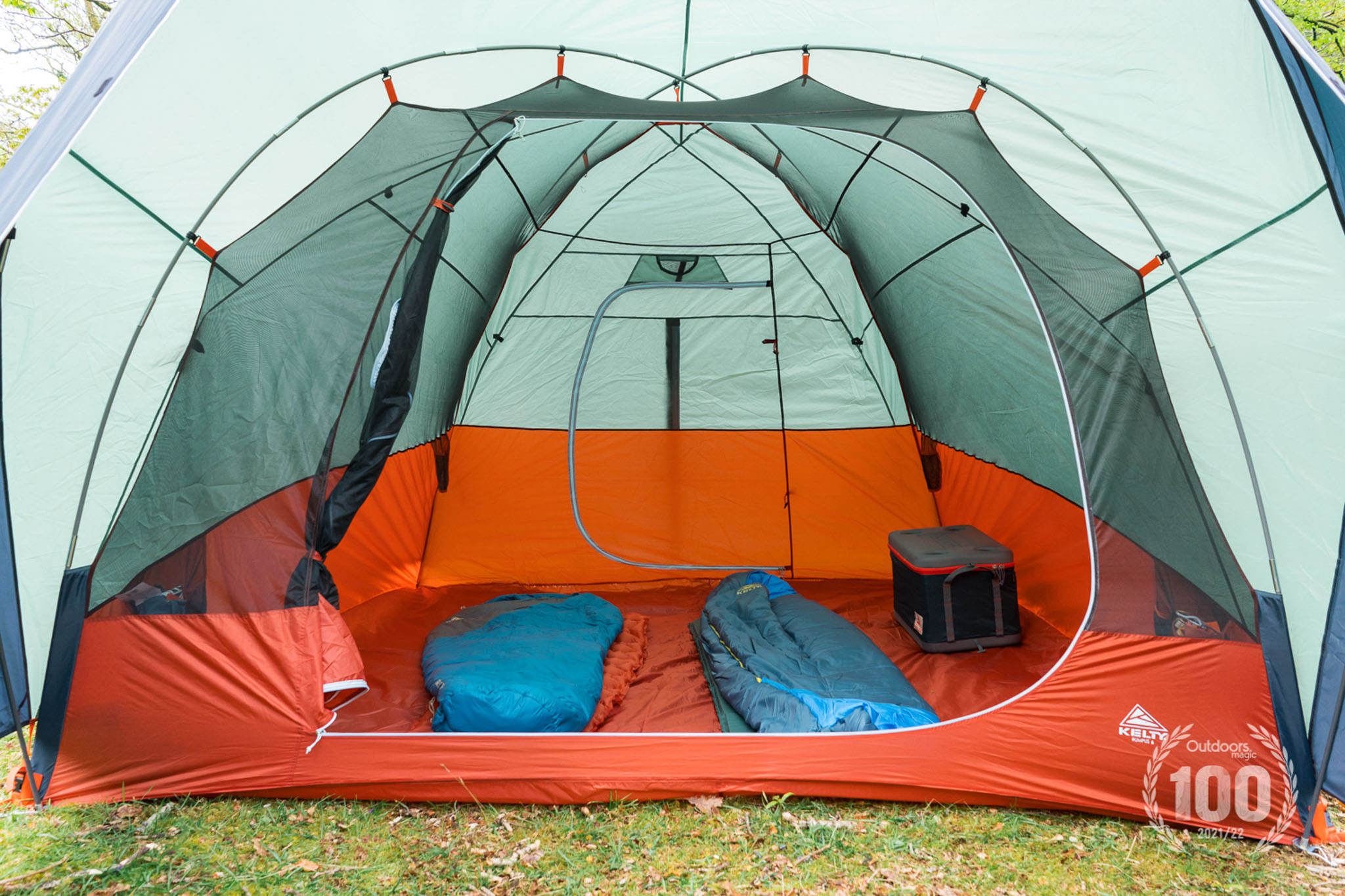
The last decade has also seen the rise of the air tent. These use inflatable beams instead of traditional tent poles, making for a structure that can often be more robust than poled options. They do tend to be heavier and more cumbersome, however, and can take up a larger amount of car boot space.
Related: Best Sleeping Mats
Related: Best Walking Boots
Inflatable tent or poled tent? That’s your decision to make but to help you whittle down your tent selection, we’ve carefully picked out the top family tents from leading brands, ranging from four-person to giant eight-berth options. They’re designed to offer different camping experiences – so whether you want the communal space and timeless appeal of a deluxe tipi or bell tent or a roomy modular tent with separate bedroom areas for your teenagers, there’s an option for you.
Best Family Tents – Our Team’s Top Picks
We’ve tested a number of different tents for family camping, whittled down our top 10 and also picked out our recommendations in each different category. These are the category winners:
- Quechua Inflatable Camping Tent Air Seconds – Best Overall Family Tent
- Kelty Rumpus 6 – Our Runner-up
- Vango Lismore 450 – Best Value Tent for Family Camping
- Robens Klondike – Best Bell Tent for Family Camping
- Tentbox Lite XL – Best Rooftop Tent for Family Camping
How We Tested Them
Matt Jones conducted the initial testing for this round up while Will Renwick and Jazz Noble made subsequent updates. The tents were all assessed in summer conditions within the UK. Each one was stashed in a car boot and used on camping weekends away where we assessed the overall convenience, comfort, protection, durability and quality of each design. We’ve also ensured that all budgets are catered for here and have judged brands across the spectrum of inflatable and pole-structured designs.
Editor’s Note: This article was updated in January 2026 to ensure that all of the products are still available for purchase.
1. Quechua Inflatable Camping Tent Air Seconds
Selected as our best family tent overall

Price: £900
Weight: 29kg
Type: Air dome tent
Sleeps: 8
All credit to Quechua and Decathlon as they’ve created an impressive, incredibly fun to use tent here. It’s an air tent with four beams – two of which cross at the top – plus two fibre glass poles that create arches on each side. During our tests, we found the overall structure to be very sturdy and reliable in its design, especially with all of the guylines and pegging points used.
It sleeps eight people comfortably, with four bedrooms or two if you remove the dividers on each side. We’d say that you could squeeze in a few more people if you were happy getting cosy with each other.
The bedrooms are surrounded by blackened, heat reflective materials which, from our experience, were excellent at keeping the early morning light out. They also made the sleeping areas notably cooler than the main living area of the tent. Said living area is very spacious. We found we could fit a large fold out table inside it, plus four normal size camping chairs. The numerous organiser pockets are very handy and we loved the amount of light the window and large door provided. Our tallest tester was 6 foot 1 and they could stand comfortably in the tent with clearance above their head.
There are vents on the ceiling and also two giant vents on each side of the tent at its base and these can be fully sealed in bad weather or opened right up to serve as windows for each bedroom. For extra ventilation, you can also leave the main door open with the mesh panel zipped up to keep out bugs.
We timed ourselves pitching this for the first time having just glanced at the instructions within the bag. It took 18 minutes and 21 seconds for a complete pitch. That’s pretty swift for a tent of this size – and it was a hot day so we were glad it didn’t take long!
Packing it away took 16 minutes and 09 seconds. Again, that’s reassuringly and surprisingly fast. It would’ve been faster had we not been so diligent in tying up all of the guylines. It was really sped up by the fact that this comes with an oversized bag that the tent will slot nicely into without having to exert yourself.
At £900, this tent isn’t cheap and you’ll need to also fork out on a pump if you don’t already have one. But it is good quality and sturdy too. The only real downside is that the two fibreglass poles are on the flimsy side, but that’s our only gripe with this.
Buy the Quechua Air Inflatable 8P: £900 at Decathlon.co.uk
2. Kelty Rumpus 6
This came a close second in our tests and it’s the best option for smaller groups and families.

Price: £390
Weight: 8.37kg
Type: Dome
Sleeps: 6 (4P also available)
OK this isn’t the most specced out or luxurious family tent, but it’s functional, convenient, and fairly priced and we really like the simplicity of it.
We’ve found putting the Kelty Rumpus 6 up to be quick and easy and packing it away was convenient too, all thanks to the oversized ‘shark mouth’ stuff sack it comes with.
The living space is huge, with plenty of space for six fully grown people to lie down and a decent amount of headspace too. There isn’t much porch space but there’s still room for three or four people to kick back in their camping chairs. You can also open up the back of the tent to essentially transform the whole thing into a gazebo of sorts.
It’s design, resembling a kind of oversized packing tent, makes this a sturdy option that’ll withstand some rough weather. The durable materials also add to the overall reliability too.
Bear in mind there’s a 4-person version of the Rumpus too.
Selected for our Outdoor 100 – read our full Kelty Rumpus 6 review.
Buy the Kelty Rumpus 6: £390 at Campingworld.co.uk
3. Vango Lismore 450
This is our pick for the best value family camping tent.
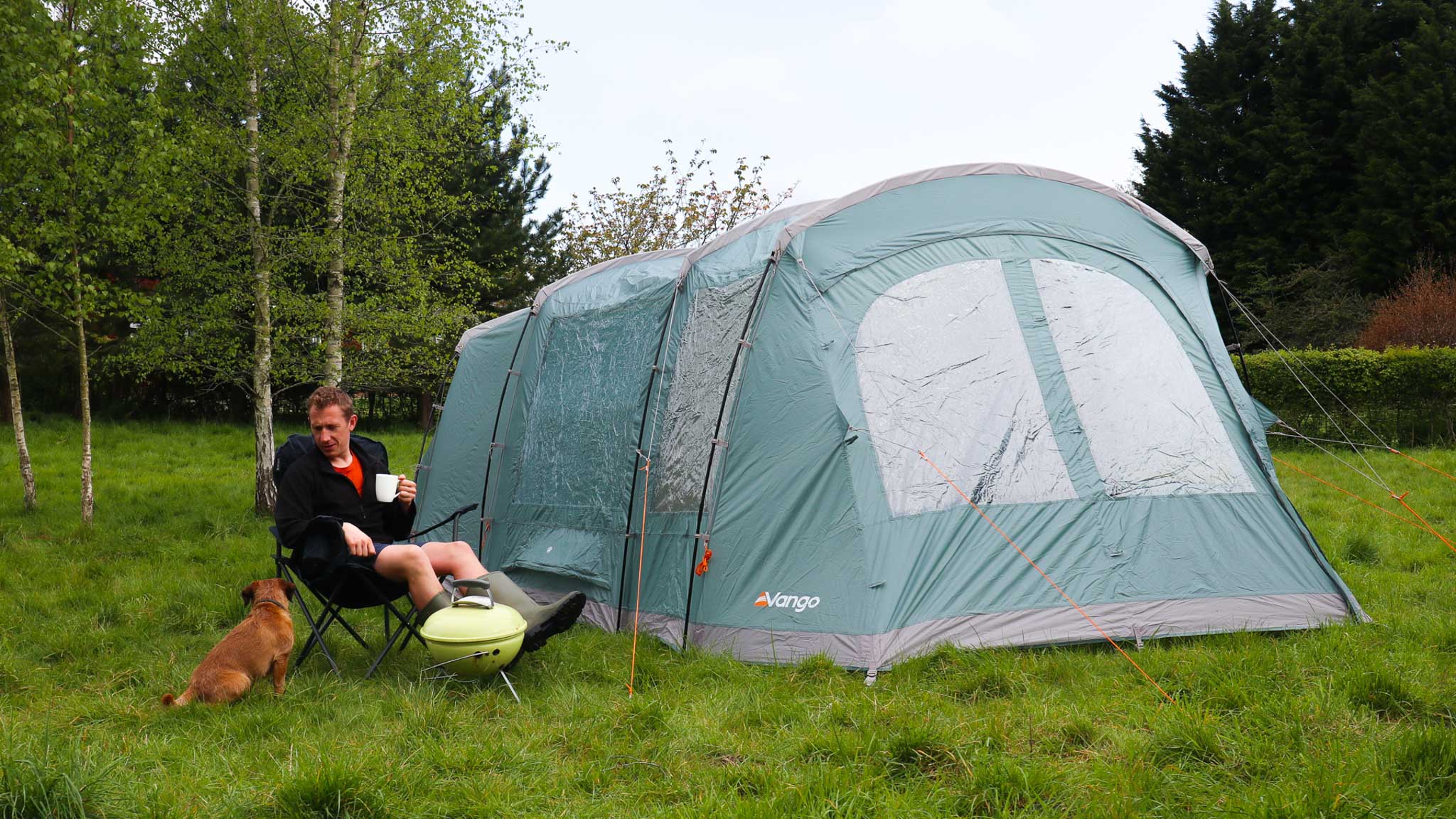
Price: £370
Weight: 21.04kg
Type: Tunnel
Sleeps: 4 to 5
From what we’ve seen having tested out this tent in early spring conditions, the £450 price tag is pretty good value for what you get from this.
We found that pitching this singlehandedly is doable, though it did take us about 25 minutes to get it to a satisfying enough standard. With two people, a 15 minute pitch is realistic.
We found it to be very spacious. The sleeping area is huge – easily big enough for two adults and two children. This can also be split in half with an easy to erect wall divider.
There are lots of really nice touches to the Lismore, with easy to erect window covers, big vents, pockets and doors and windows that allow you to open the tent right up – that’s something we really appreciated when using this on hot days.
Our only gripe about this tent is that the poles do feel a little flimsy. They’re made from fibreglass, which doesn’t have much of a reputation for durability. Vango sell replacements, which is good, but we’d prefer it came with poles with a more built-to-last feel.
Buy the Vango Lismore 450: £370 (sale) at Snowandrock.com
4. Robens Klondike
Selected as our favourite bell tent for family camps.

Price: £962
Weight: 16.7kg
Type: Bell tent
Sleeps: 6
With timeless looks that will appeal to glampers and traditionalists alike, this large and airy bell tent offers masses of internal headroom and plenty of floorspace. It’s part of Robens’ popular Outback range, a series of eye-catching, retro-styled tents based on the designs used by early American pioneers. However, it’s made from lightweight polycotton rather than old-school heavy cotton canvas, making it much quicker drying than a standard bell tent, not to mention easier to transport. With a packed size of 80 x 27cm, it’ll fit in the boot of most family cars with room to spare.
It will sleep up to six people in relative comfort, though a family of four would be the ideal occupants. If you want to divide up the interior space, an additional inner tent can be purchased to create two bedrooms and a separate living area. Plenty of other accessories are also available, including a footprint and a soft, fleecy tent carpet. It also has a vent for a stove pipe, allowing it to be used with a frontier-style woodstove (though this can’t be used in conjunction with the optional inner tent).
With a stove all set up and blazing away inside, it makes a very cosy shelter for colder weather, extending its use into winter. That makes it a pretty versatile tent and arguably a good investment too, especially if you intend to use it year-round. Whatever the season though, this is a durable tent with plenty of charm that is the ideal base for outdoorsy families.
Selected for our Outdoor 100 – read our full Robens Klondike review.
Buy the Robens Klondike: £575 at Blacks.co.uk
5. Tentbox Lite XL
Selected as our favourite rooftop tent for family road trips and camping trips.
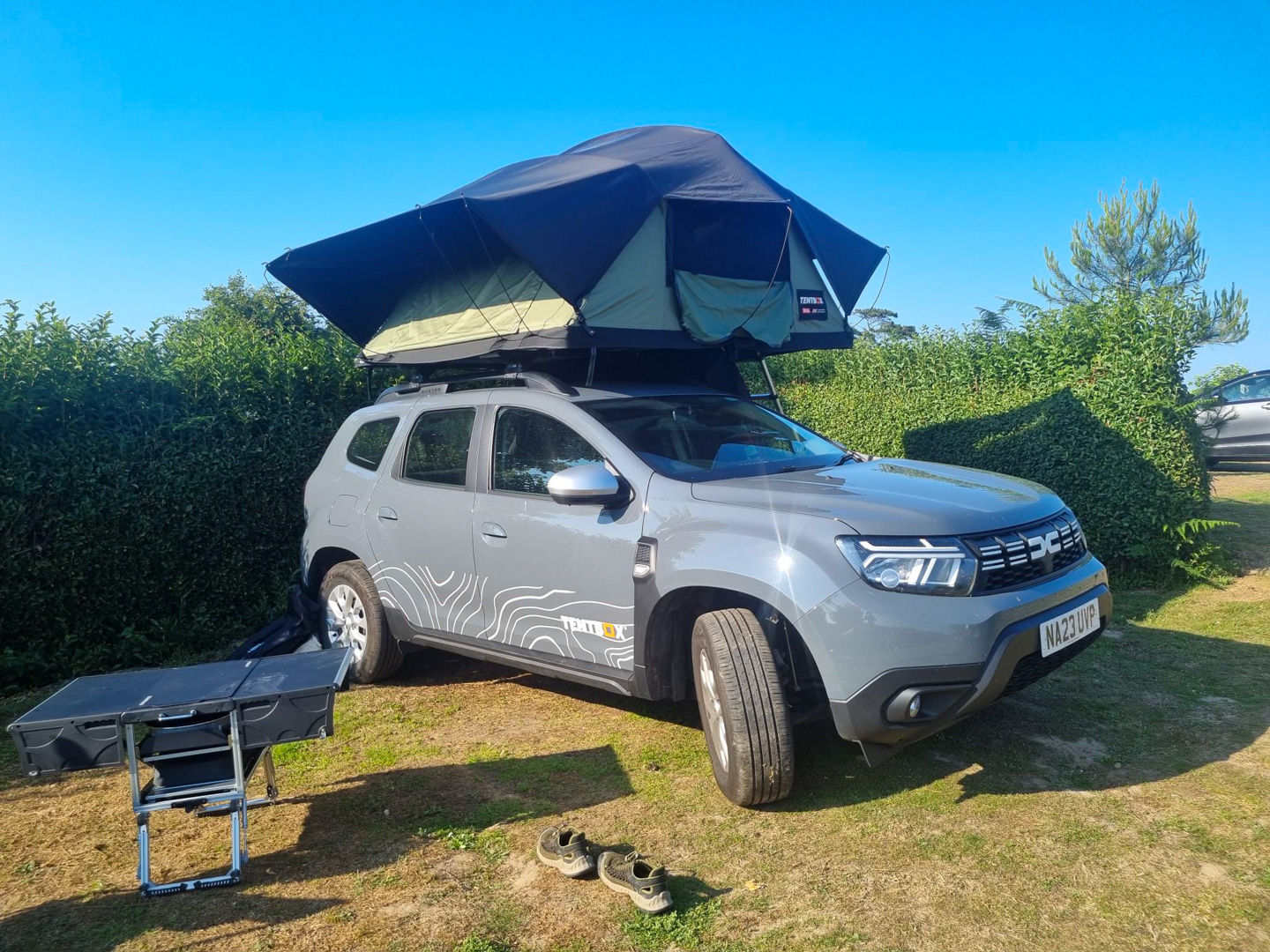
Price: £1895
Weight: 62kg
Type: Car roof tent
Sleeps: 2 adults and 2 children
This offers a different approach to camping, a sort of best of both worlds between van camping and conventional camping. And we love it. We’ve extensively tested out the Tentbox Lite XL and had a blast. Perfect for two adults and two kids, we found we could pitch this car roof tent in less than five minutes and packing it away was just as quick, with the canopy, poles and built-in mattress all folding away in a concertina-type style.
The built-in foam mattress is very comfortable – much more comfortable than most air beds or backpacking mats – while inside you have side and roof doors and windows that can be fully opened up for ventilation or for stargazing,and there are a range of very nifty pockets to keep things organised. We found the quality of the materials and construction to be very good overall and particularly liked the fact the fabric creates a blackout effect inside.
Tentbox offers a range of different models, with options to suit different needs and car types. The cheapest comes in at £995 while the most expensive is the £2,500 Tentbox Cargo 2.0. Of course one of the downsides to rooftop tents such as these is that you have to pack up everything when you want to drive away from your campsite, so they’re not ideal if you like to set up a basecamp that you can plant your flag in and come and go effortlessly.
Read our full Tentbox Lite XL review.
Buy the Tentbox Lite XL: £1895 at Tentbox.com
6. Snow Peak Amenity Dome M
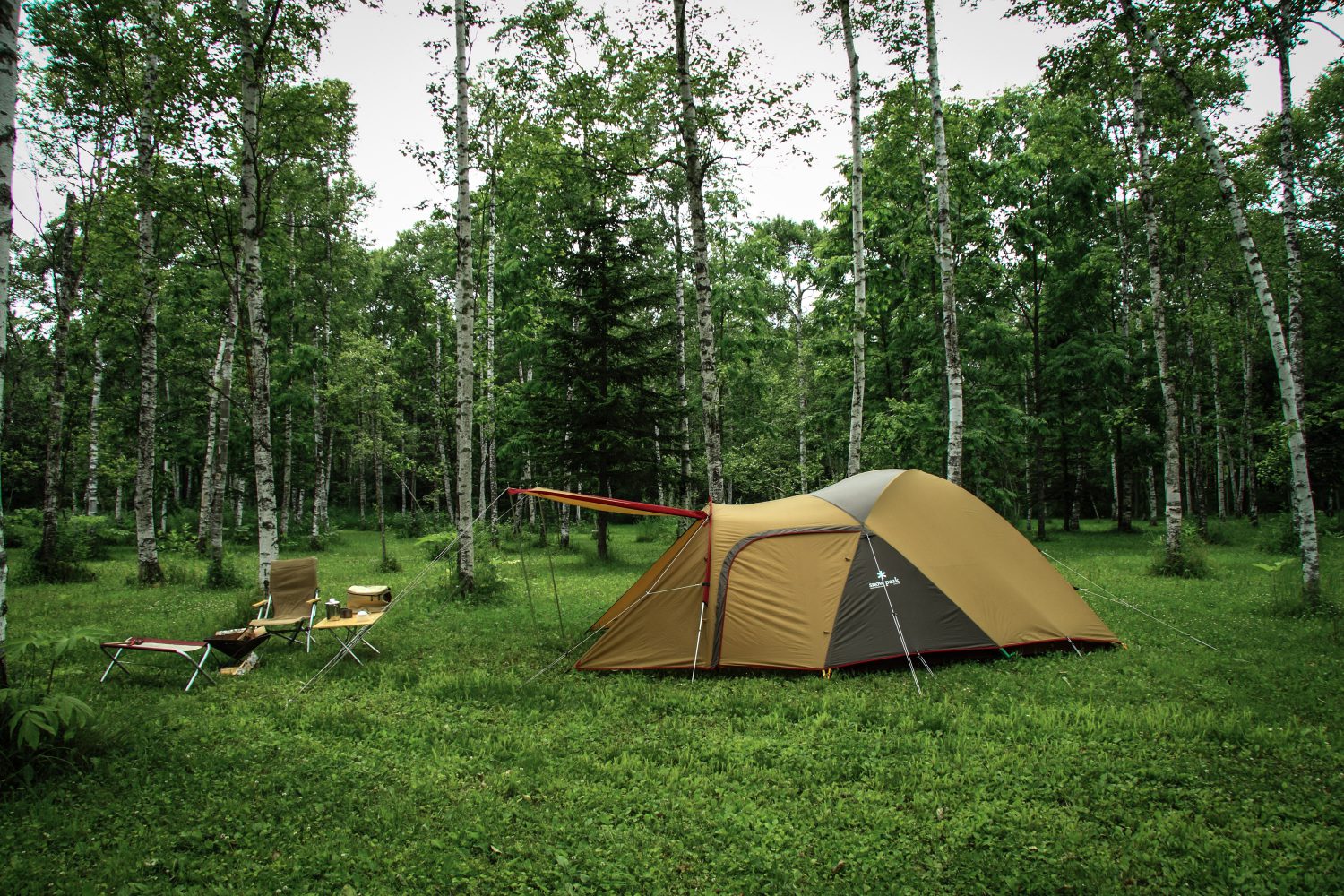
Price: £270
Weight: 8.91kg
Type: Dome tent with porch extension
Sleeps: 4
With its striking styling, considered design and unusual offset porch that also has the option to create a vestibule canopy, the Amenity Dome is far more than just another standard dome tent. For one thing, entry and exit is easy from almost every angle, thanks to the addition of front, side and even rear doors. If you hate having to crawl in and out of a single small entrance, you’ll love the versatility that this model offers. This design also means that it feels bright and airy, aided by mesh ventilation throughout for plenty of airflow.
Though Snow Peak describes the Amenity Dome M as a four-person tent, it’s really geared towards small families, and works best for parents camping with two or three small children. For families with older teenagers, you’re probably better off looking elsewhere. On the other hand, this tent would work well for a camping couple or a group of three friends – since the main inner space will accommodate up to three full-size sleeping mats, placed side by side. With an internal height of 1.4m in the porch and 1.5m in the main inner, there’s plenty of room to sit up and even to relax on camping chairs. The large front door can be rolled up or set up as a canopy with a pair of trekking poles or bivvy poles to make a forward dining shelter too.
The domed tent structure is a familiar design that is easy to set up, aided by colour-coordinated poles and pole sleeves. It pitches inner first, which is maybe not so ideal for wet weekends away, but on the other hand it does mean that the inner can be used without the flysheet as a cool, shady shelter in summer. The main body of the tent is completely free-standing, which makes it easy to reposition if required.
Build quality is excellent, with robust materials and components employed throughout, and the tent feels both robust and stable when pegged and guyed out. At 1,800mm the hydrostatic head rating of the fabric isn’t the highest, and although it is of course fully waterproof, this is really a tent designed for balmy nights rather than severe, sustained downpours. It probably wouldn’t be our first pick for soggy nights away. But if you’re anticipating decent weather for your camping holiday or heading to sunnier climes, this would be a great pick thanks to its fantastic airflow, multiple entrances and generous porch/vestibule canopy area.
Buy the Snow Peak Amenity Dome: £270 at Uk.snowpeak.com
7. Vaude Badawi 4
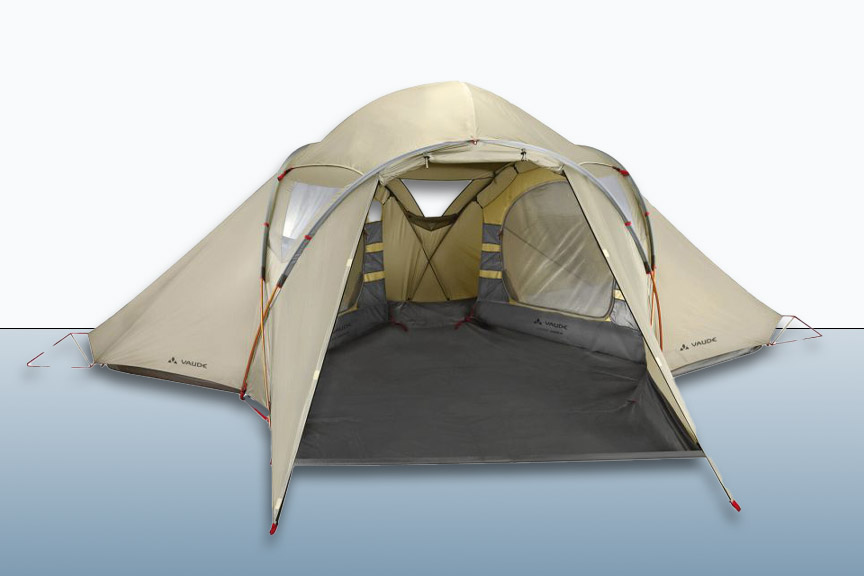
Price: £1050
Weight: 11.5kg
Type: Semi-geodesic tent
Sleeps: 4
German outdoor brand Vaude are another manufacturer better known for their lightweight tents than their large family tents – the highly-regarded Hogan SUL and Terra Hogan 2P being two such examples, models that made it into our Best Solo Backpacking Tents and Best 2-Person Tents guides respectively. We’ve also been impressed with their innovative approach to tent construction, the Space Seamless 2-3P being a case in point.
In addition, Vaude are known for their focus on sustainability, and many of their products have been regular entrants in our annual Green Gear Guides – which includes everything from eco-friendly sleeping backs to backpacks. Unsurprisingly then, the 4-person Badawi 4 has also been built with sustainability in mind.
Unlike many family tents, particularly those fitted with windows, this tent is entirely PVC-free. What’s the problem with PVC? Well, despite being a widely used plastic for products like water pipes, tarpaulins and bags, PVC (polyvinyl chloride) often contains phthalates, plasticizers that are added to keep the material from becoming brittle. Although PVC itself is inert and non-toxic, phthalates are suspected of being carcinogenic and they can ‘outgas’ from finished PVC.
The tent itself utilises an unusual and effective design that is very cleverly engineered. It is built around three structural crossing poles made from DAC aluminium alloy with an additional triple hubbed overhead pole to further increase headroom. The result is a broadly triangular central footprint with a porch and twin two-berth bedrooms off the main living space. Though this set-up might sound complex, pitching is actually very easy. In fact, the flysheet and inner tents can be pitched all-in-one, while the poles are all conveniently the same length, so it hardly matters which one goes where.
The sizeable and pole-free central area is well ventilated, with three mesh windows to bring light and air into the tent. There is some 2.15m of headroom in the middle, so even tall adults can stand up. The bedrooms aren’t quite so roomy – they’re wide enough to put two large sleeping mats down (or even a double mat), but not particularly long at 2m each. The walls also slope fairly steeply, reducing headroom, especially for the person who draws the short straw and has to sleep on the ‘outside’.
The porch is a good size though and has a handy footprint to keep it free from mud and grass. Overall, the benefits of this unusual design outweigh its drawbacks – it is stable, sheds wind well and is versatile enough for warm weather or colder conditions thanks to variable ventilation and multiple zipped doors. The domed central area and large porch, with its big entrance, are also great when you’ve got multiple campers getting up and out for the day, giving you plenty of space to store everyone’s gear.
Buy the Vaude Badawi 4: £1050 at Vaude.com
8. Outwell Airville 6SA
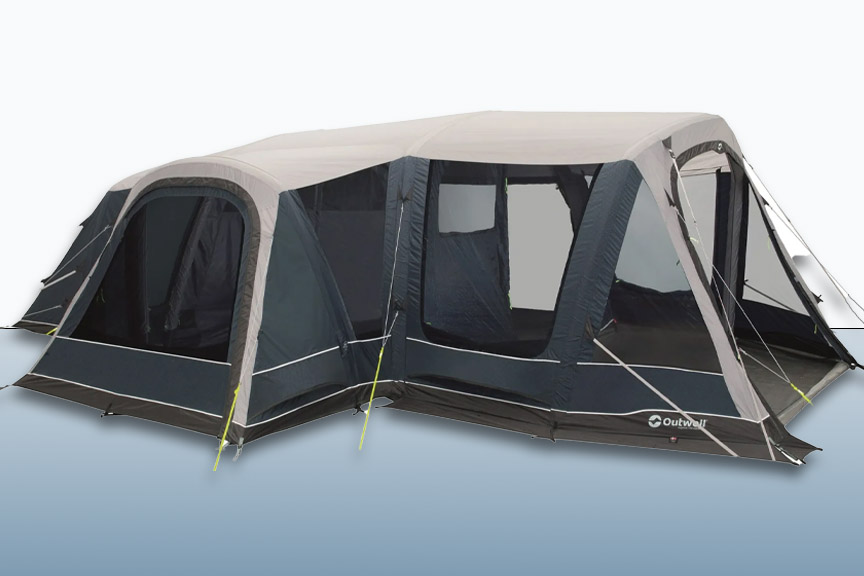
Price: £1,000
Weight: 41.3kg
Type: Air tunnel tent with side annexe
Sleeps: 6
A premium family tent with two bedrooms, a large living area, side annexe and enclosed porch, the Outwell Airville 6SA is a bit of a monster. But despite its generous proportions, pitching is easy thanks to Outwell’s efficient and intuitive air beam system. Once up it is secure, sturdy and very weatherproof, with a polyester flysheet that has a class-leading 6,000mm hydrostatic head rating. As you’d expect, it’s bright and roomy inside, with good airflow thanks to a large front entrance plus two additional side doors.
Working from back to front, there are two darkened bedrooms equipped with Outwell’s ‘Quick & Quiet’ magnetic doors, which do away with noisy zips or Velcro fastenings (ideal if someone gets up for the loo at 3am). The sleeping compartments also have storage pockets and a cable entry point for electric hook-ups. Then there’s a large living space, which can either be configured as a huge single area or closed off with a separate covered porch. Up top, this has Outwell’s HookTrack for hanging camp lanterns or rigging up LED lighting systems. One side of the tent also has an unusual annexe, which could either be used as an additional vestibule or as a private area for relaxing, e.g. on a lounger or inflatable sofa.
The front porch can be left open or enclosed via zipped doors and is fitted with privacy windows and blinds. There is also an insect mesh screen to keep bugs out, which makes this a good tent for midge-prone campsites. This front area of the tent can be used with or without a groundsheet, depending on whether you want to maximise living space or create a storage area for wet and muddy gear. Overall, the Outwell Airville 6SA is a well-designed and well-made tent from a respected brand. Though it isn’t cheap, it ought to last years, and possesses all the features that a modern family might need.
Buy the Outwell Airville 6SA: £1000 at Outdoorworlddirect.co.uk
9. Coleman FastPitch Forest Lodge 4
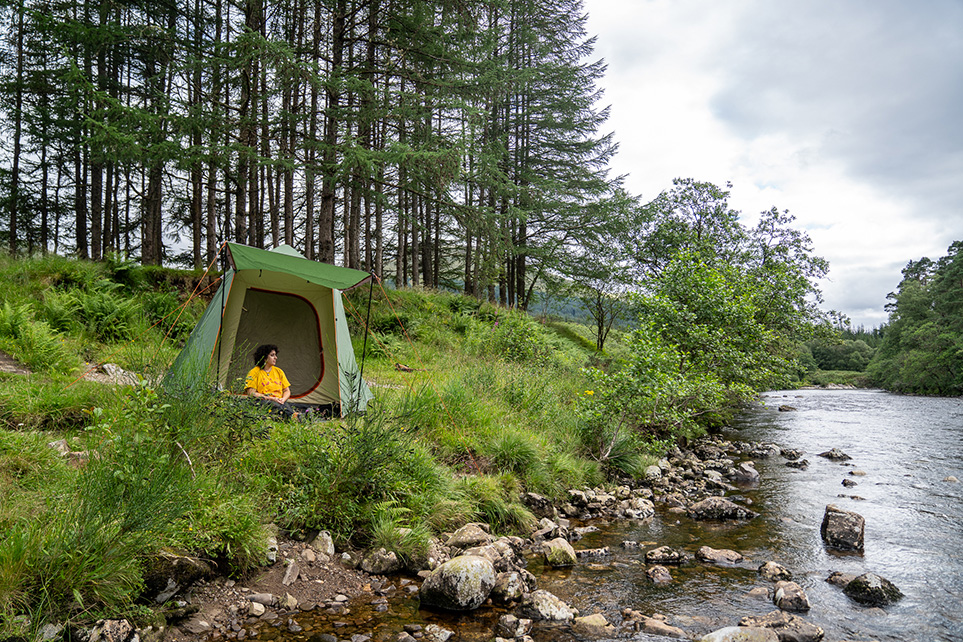
Price: £220
Weight: 12.5kg
Type: Steel frame cabin tent
Sleeps: 4
OM tester Jazz recently used Coleman’s FastPitch Forest Lodge 4 in both the Lake District, and the Highlands and Outer Hebrides in Scotland. She said, “I really enjoyed using this tent. It has a retro look to it, and you feel almost like you’re in a cabin rather than a tent. I think that’s probably down to the large windows on either side of the tent that let you look out at nature from the comfort of your bed.”
“A few of my friends and I used it on some calm, summer campouts and it did just the job. I can see it being a good option for small families and groups who are embarking on a road trip type holiday where you want something that’s easy to put up and take down quickly while you’re moving from place to place. It’s spacious too, thanks to the huge porch at the front where you can store all your kit.”
“I would say, however, that it’s not ideal for windy weather. My poles eventually gave way in some gusty Cumbrian winds unfortunately. For calmer weather though, I had no problems. I particularly appreciated all the storage options inside the tent, especially the handy netting towards the top of the tent that’s ideal for a camping lantern.”
“Due to the height and spaciousness of the tent, it did get a little chilly at times, so I’d recommend using it in mild to warmer climates, or simply make sure to pack your warm sleeping bag. It’s also worth bearing in mind that the anti-bug netting on the windows, while effective for the majority of UK bug life, is less effective against the pesky Scottish midge.”
Buy the Coleman FastPitch Forest Lodge 4 tent: £220 at Halfords.com
Which Family Tent is Right for Me
When choosing a tent for family camping trips, some of the first things to consider include the size of your family, the length of your trip and the weather you’re likely to expect. Thinking about those factors will help you to gauge the size of tent you want, the amount of comfort or conveniences you’ll need from it and the overall durability it will offer.
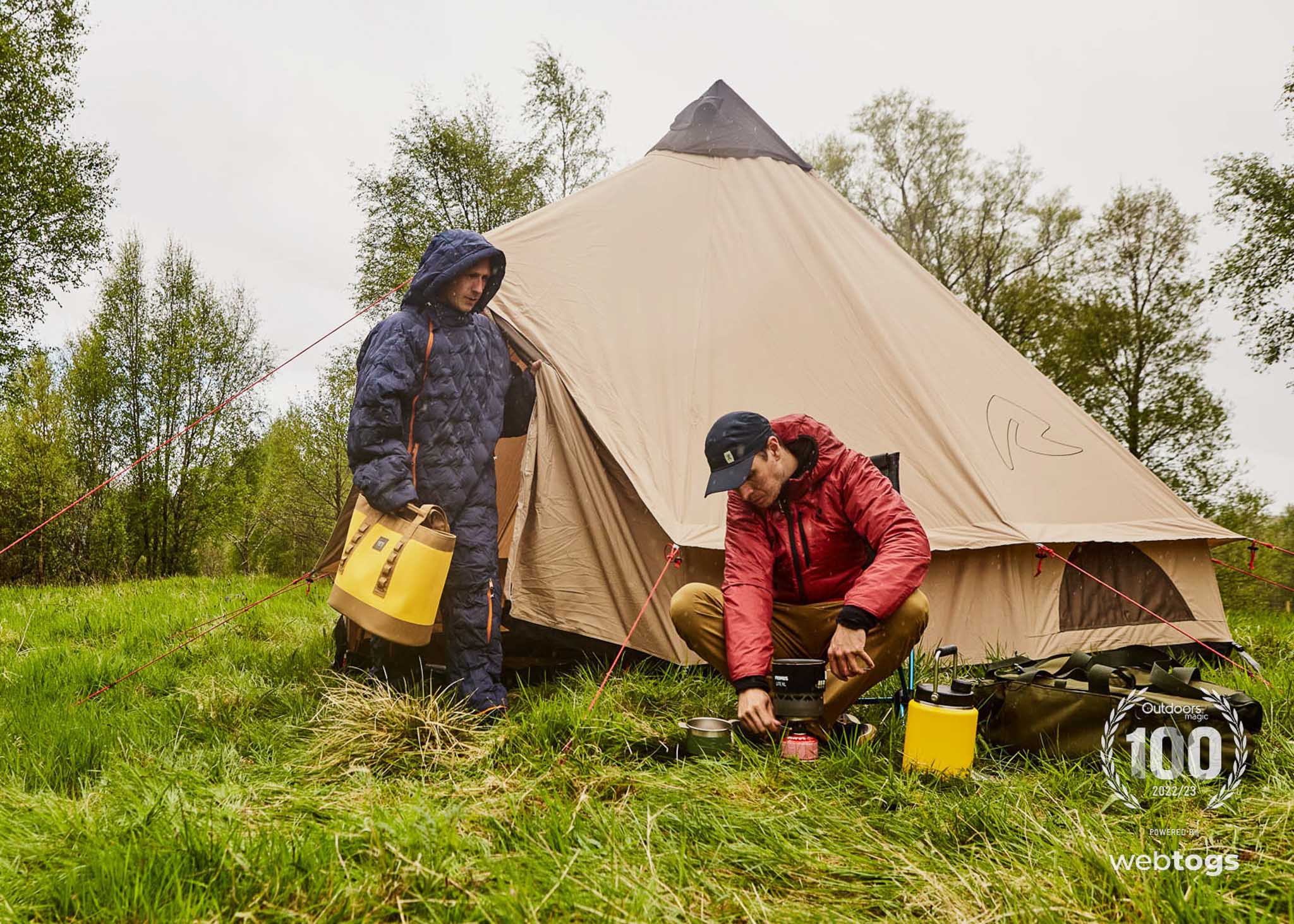
Family tents – and tents in general, actually – tend to come with tradeoffs. If you want something that’s light to carry, it will often be short on space. Likewise, if you want something that’s roomy, it’ll often be heavy to carry. There are exceptions to this rule but the problem then is that they usually come with a heavy price tag. Find something that balances all three and you’ve hit the sweet spot.
Material quality is a big factor affecting a tent’s warmth-to-weight ratio. Generally speaking, if a tent is light and spacious, that’ll mean the materials are all good quality. It might have aluminium poles and pegs, for instance, and nylon fabrics – maybe even silicon coated nylon.
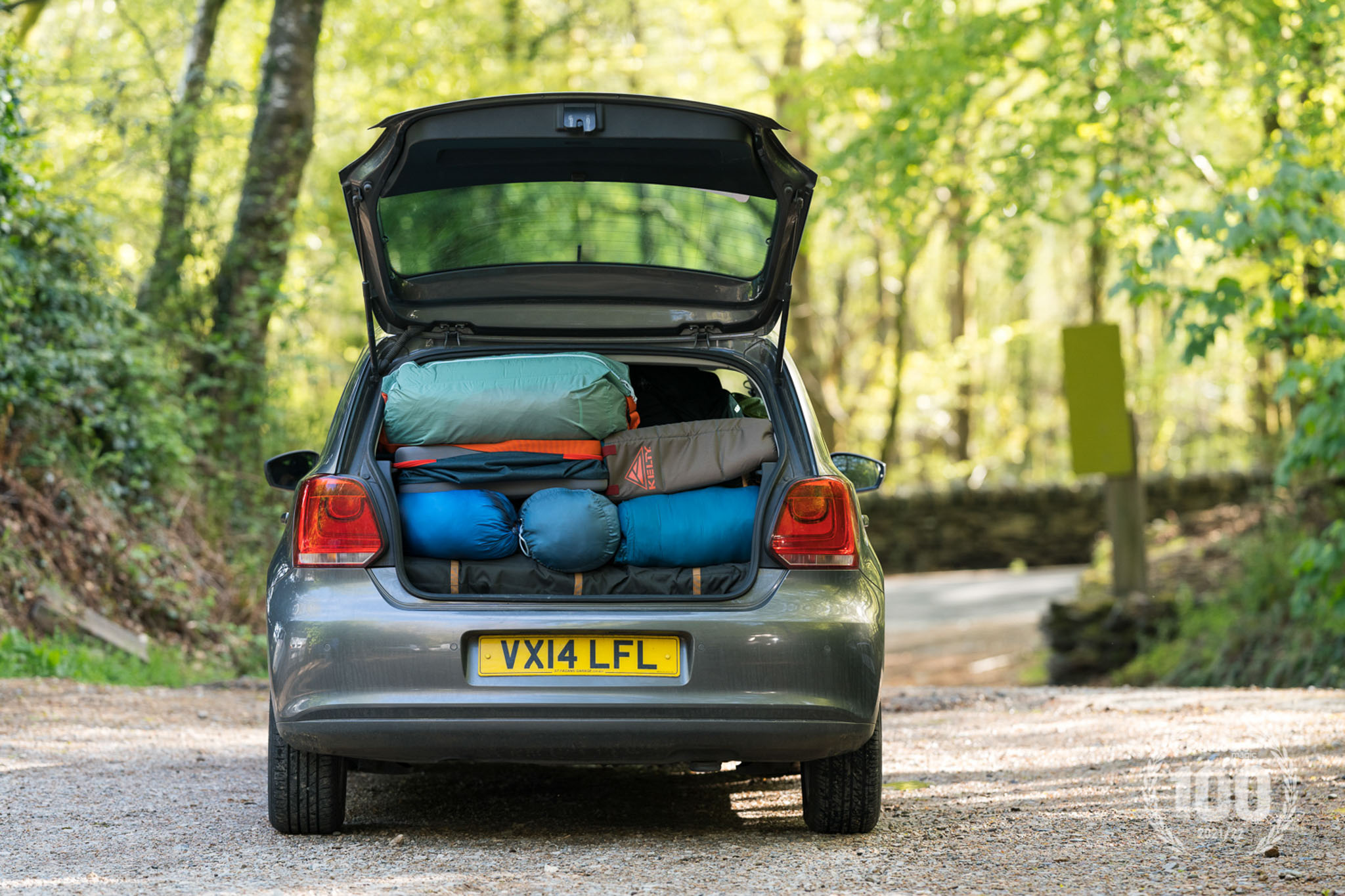
If you’re planning camping trips where you’ll be pitching your tent right by your vehicle, weight shouldn’t be such an issue. Still, it’s worth considering the packed size; you don’t want your tent swallowing up the entire space of your car boot, do you?
In our books, the ideal family camping tent will be light, packable and easy to carry, it’ll be stable in strong winds, waterproof in wet weather, good at managing condensation and it’ll be easy to pitch and to pack away. It’ll also be liveable and will have private spaces for sleeping, space to stand up, and places to keep your gear organised too. Think about protection from creepy crawlies too – a good tent will be able to block them out without restricting airflow through the tent too.
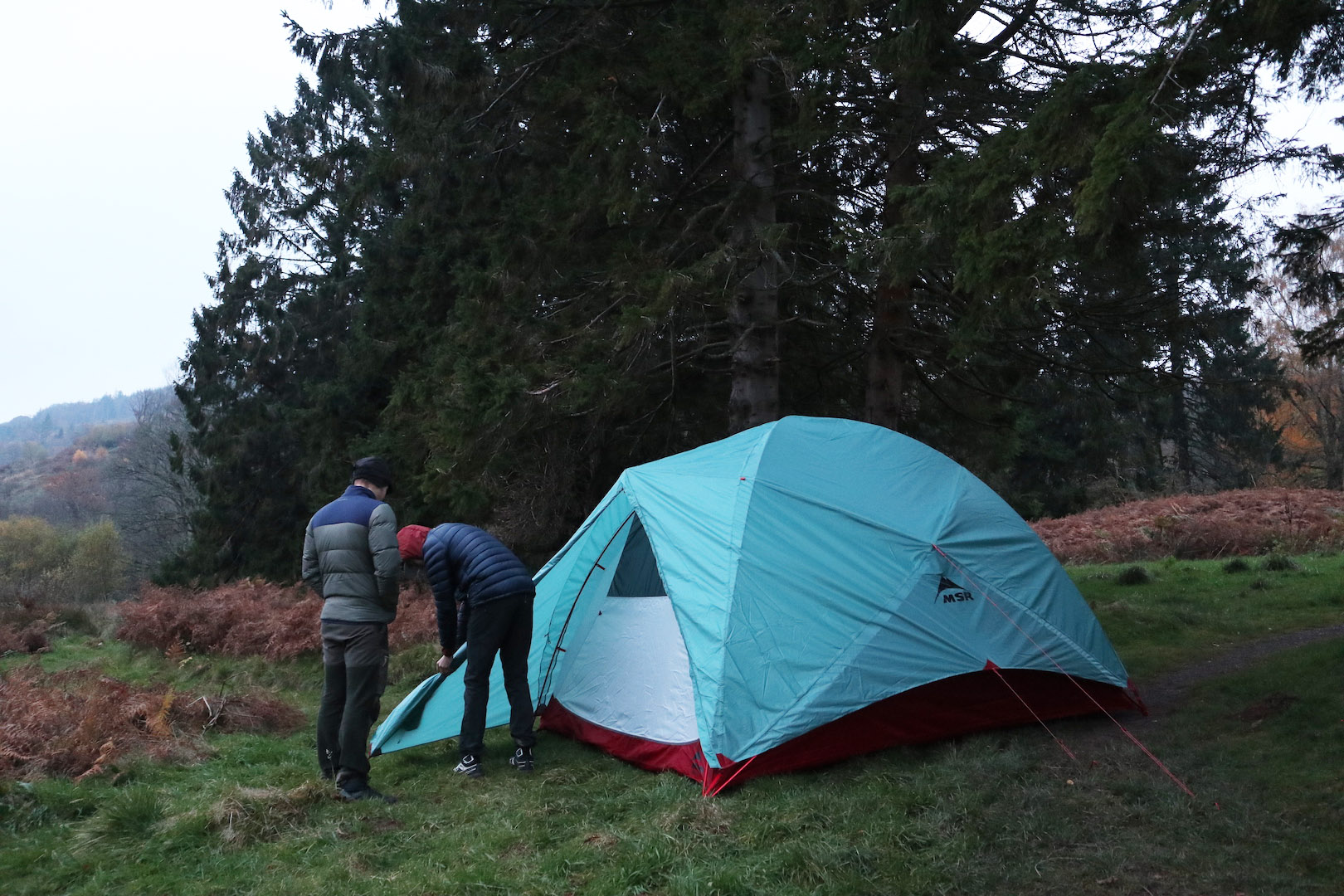
Many tents these days come with blackout and heat reflecting fabrics. These can be very useful for those who want to lie in during summer as they’ll keep the early morning sunlight and warmth out, allowing you that extra bit of rest you might need. Going to a festival? This could be a must-have!
Other details that make a useful tent for camping in groups include storage options and hanging hooks. Windows and vents are very important if you’re camping in humid conditions where condensation build up can be a factor.
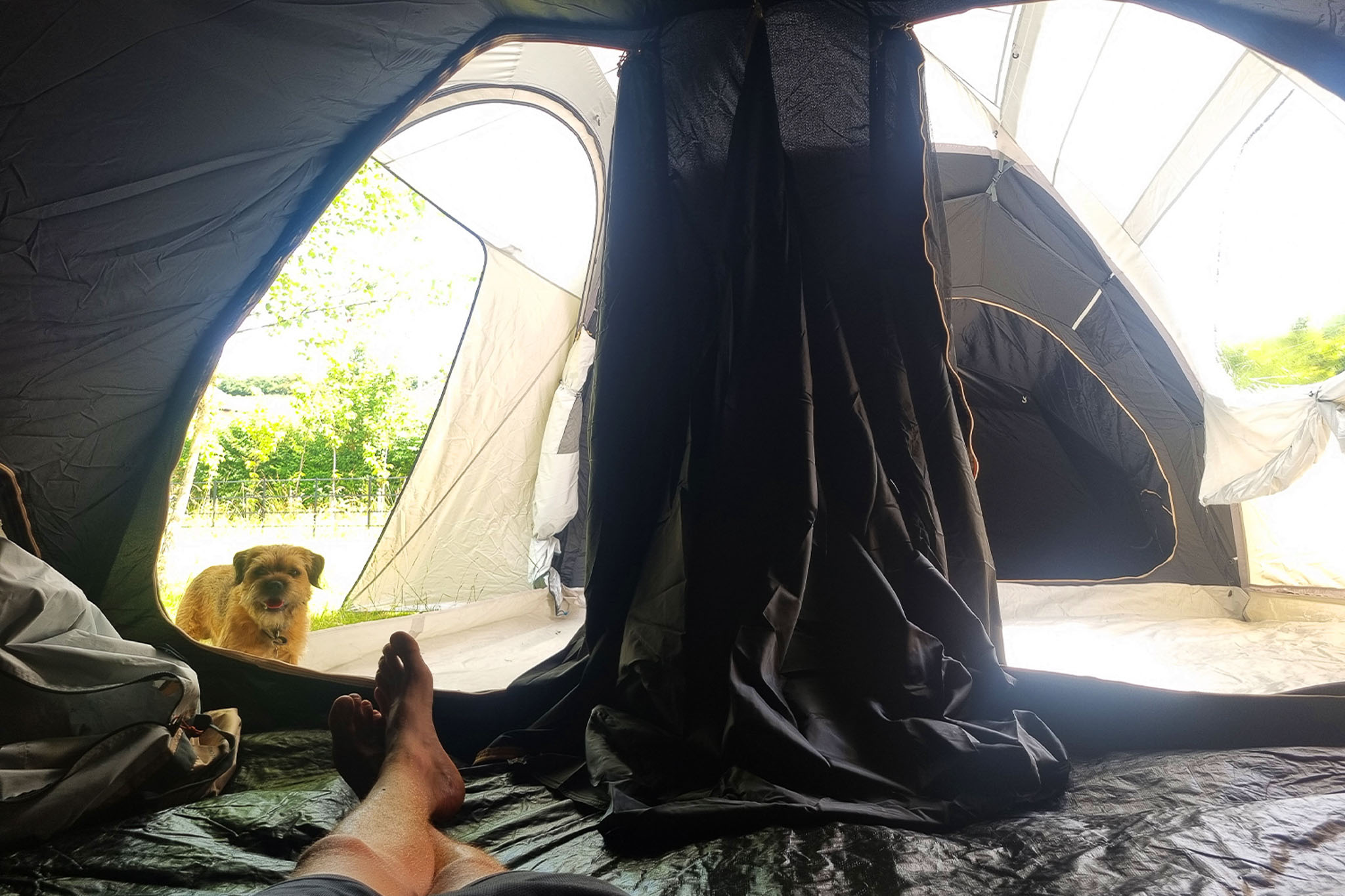
Inflatable Tents versus Tents with Poles
Inflatable tents came onto the scene about a decade ago and they’re now extremely common. What’s made them so popular? It’s down to a couple of reasons. First of all, tents with ‘air beams’ are not only extremely stable but they’re also durable. This makes them able to bounce back from the kind of gusts that would normally destroy a tent that’s erected by poles. Inflatable tents are also easy to pitch too, saving you from the awkwardness of having to carefully slide rigid poles through sleeves without them catching.
The main drawback to inflatable tents is that they can be bulky and heavy – and that’s before factoring in the weight of the pump that’s required to inflate them. So, if you’re going on a trip that might involve having to carry the tent more than just a few yards, then an inflatable one might not be the best option for you. There’s the price too, with air beam tents generally costing quite a bit more than tents with poles.
Rooftop Tents
Rooftop tents that fix to the top of a car or van have been around for some time, but have only really been used for for safari trips. They’ve now broken into the mainstream however and have become a hugely common sight on motorways and at campsites. Why so popular? OM editor Will can answer that. He spent last summer using a Tentbox Lite XL. “I began my trial period with the Tentbox with scepticism,” said Will in his review of the Tentbox Lite XL. “By the end of my trip I was totally sold. At first I couldn’t really understand why people wanted to camp on their car and not on the ground, but actually I hadn’t realised just how much more comfortable the integrated mats are – and also the difference you get from being off the cold and damp ground. Also, the set up and pack up time is generally much, much faster than with a conventional tent and the sleeping mats etc that you need to use with them.”
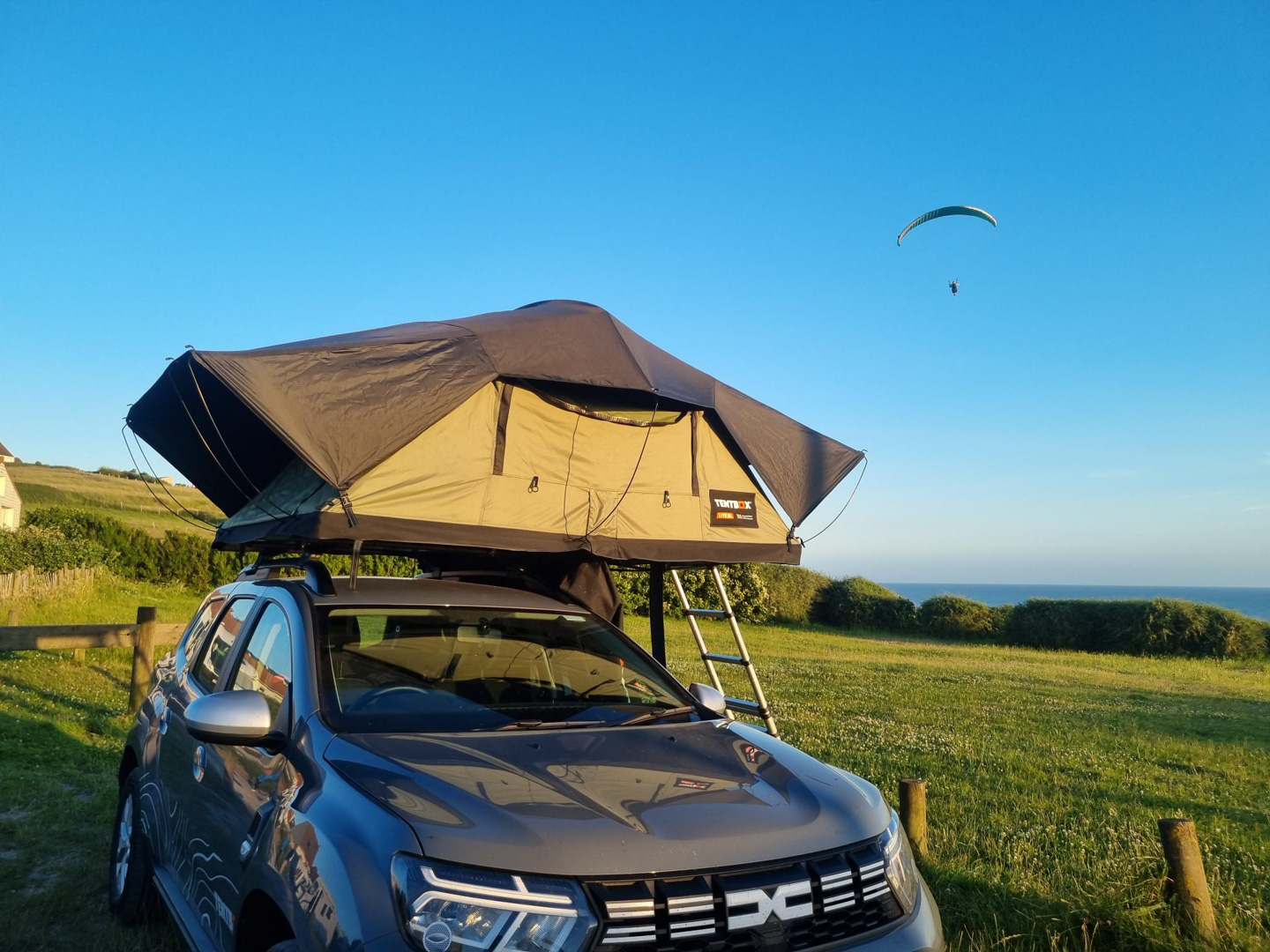
Will does admit there are drawbacks to rooftop tents, however. “In strong winds you can feel the car wobbling about quite a bit, and you can be left quite high and exposed. Also, if you want to drive off somewhere from the campsite, even just to grab some breakfast, you’ve got to pack everything up. With a conventional camping set up you can obviously just leave everything where it is.”

